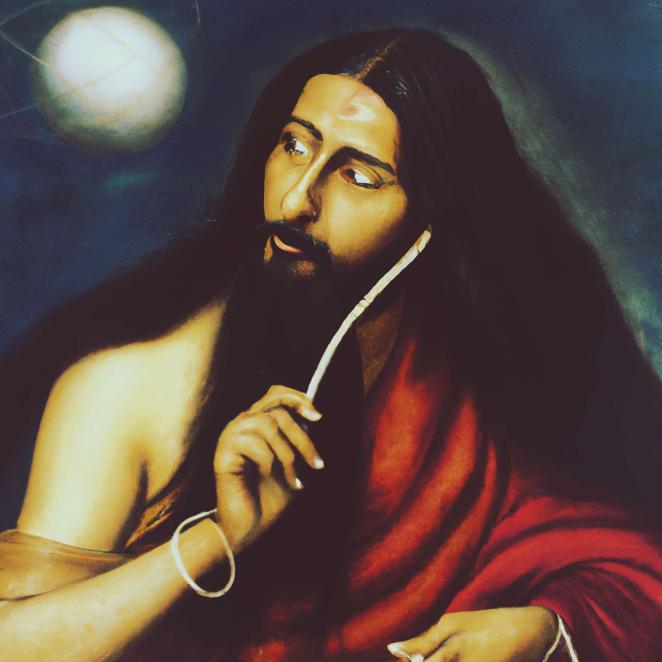APA 7: Çarıkçıoğlu, A. E. (2023, May 9). Brahmagupta. PerEXP Teamworks. [Article Link]
His life and opinions
Brahmagupta [circa 598-665 probably lived in Bhillamala (Modern name “Bhinmal”), Rajasthan, India.], one of the most successful of the ancient Indian astronomers. He also had a direct and profound influence on Islamic and Byzantine astronomy.
Brahmagupta was an Orthodox Hindu, and his religious views, especially the Hindu “Yuga system” (Which he developed to measure the age of humanity), greatly influenced his work. He seriously criticized the cosmological opinions contained in Jainism, another widespread belief in India, and other heterodox ideas, such as Aryabhata’s view that the Earth is a rotating sphere, also a widely spread view by Brahmagupta’s contemporary and rival, the First Bhaskara. [1]
His works
Brahmagupta’s fame is often attributed to the “Brahma-sphuta-siddhanta” (Written in 628 and passed into Turkish as the ‘Correctly Established Brahma Doctrine’)” is an astronomical work that he probably wrote while living in Bhillamala, the capital of the Gurjara-Pratihara Dynasty. This work was translated into Arabic in Baghdad in 771 and greatly influenced Islamic mathematics and astronomy. Late in his life, Brahmagupta published the astronomical manual “Khandakhadyaka” (665 is the year of writing and means ‘An Edible Piece’), based on Aryabhata’s system of starting every day at midnight. [2]
In addition to explaining traditional Indian astronomy in his books, Brahmagupta has devoted several chapters of Brahma-sphuta-siddhanta to mathematics. In particular, in chapters twelve and eighteen, he laid the foundations of two main areas of Indian mathematics: “Pati-ganita (‘Mathematics of procedures’ or algorithms)” and “Bija-ganita (‘Mathematics of seeds’ or equations)” -which roughly correspond to arithmetic (Including measurements) and algebra, respectively. [3]
The importance of Brahma-sphuta-siddhanta
The twelfth part is easily called “Mathematics” This calling is probably because of “Basic procedures,” such as arithmetic processes and ratios, in addition to the topics of “Practical mathematics,” such as mixtures and series, which are processed in this section, occupy most of Brahmagupta’s time dealing with mathematics. Brahmagupta has emphasized these subjects’ quantitative and qualitative importance for a mathematician or calculator (Ganaka). The eighteenth chapter, “Pulverizer,” is named after the first topic of the chapter, probably because a specific name for this field (Algebra) does not yet exist. [4]
His inventions with mathematical calculations
Brahmagupta defined zero as the result of subtracting a number from itself and presented rules for arithmetic operations that lie between negative numbers (“Decrees”) and positive numbers (“Possessions”) and durations. He has given partial solutions to the types of equations with two unknowns of the second degree.
Perhaps the invention that most contributed to the shining of his star was a formula he developed for finding the area of the quadrilateral of beams (A four-sided polygon whose vertices are located on a circle) and the length of its diagonals in terms of the extent of its edges. He also did not neglect to add an interpolation (Finding a possible value) formula, which is valuable for calculating sines. The relationship between the semi-circumference of triangles and the radius of their inner circle using the classical “Half-base height product” method used to calculate the area of triangles is also included among his inventions. [5] [6] [7]
Brahmagupta played a crucial role in Indian astronomy and made various astronomical calculations using mathematical formulas to predict the movements of the planets and Solar eclipses. He expressed the number Pi approximately as “3.1416”.
As a result, Brahmagupta is a valuable figure in Indian mathematics and astronomy and has contributed to many topics in modern mathematics and science. [8]
Resources
- DICTIONARY ENTRY Hayashi, T. (2023, April 21). Brahmagupta. Encyclopedia Britannica. [Britannica]
- WEBSITE O’Connor, J. J., & Robertson, E. F. (2000). Brahmagupta. Maths History. [Maths History]
- BOOK Chatterjee, B. (1970). The Khandakhadyaka (An Astronomical Treatise) of Brahmagupta with the commentary of Bhattotpala, 2 Vols. Motilal Banarsidass Publishers.
- BOOK Sharma, S. S. (n.d.). Mathematics & Astronomers of Ancient India. Pitambar Publishing.
- JOURNAL Puttaswamy, T. K. (2012). Introduction. In Elsevier eBooks (pp. xvii–xxiii). [ScienceDirect]
- JOURNAL Sen, S. K., & Agarwal, R. P. (2016). History of zero including its representation and role. Zero, 29–75. [ScienceDirect]
- JOURNAL Puttaswamy, T. K. (2012). Brahmagupta. In Elsevier eBooks (pp. 161–208). [ScienceDirect]
- WEBSITE Therieau, L. (n.d.). Brahmagupta: The Man Who Defined Zero. Elephant Learning. [Elephant Learning]












